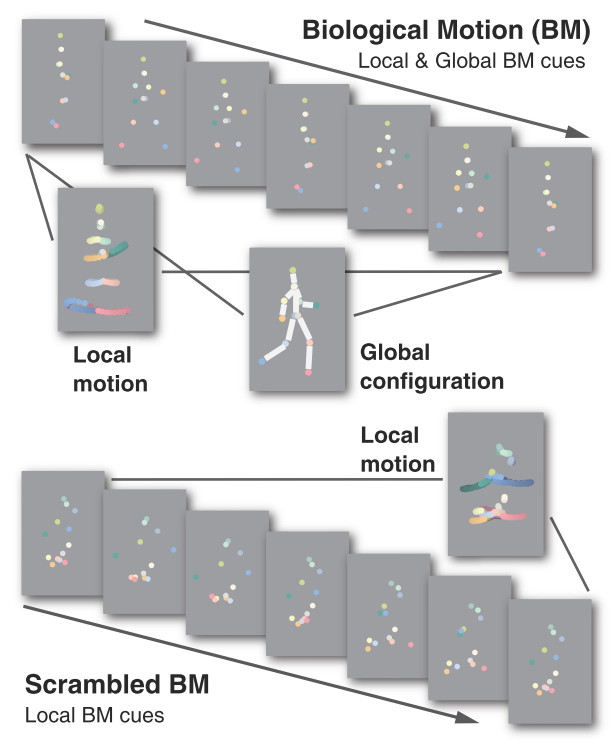Humans can readily perceive and recognize the movements of a living creature, based solely on a few point-lights tracking the motion of the major joints. Such exquisite sensitivity to biological motion (BM) signals is essential to our survival and social interaction.
However, compromised visual BM processing has been observed in various genetic conditions including Autism Spectrum Disorder (ASD), a highly prevalent and heritable neurodevelopmental disorder characterized by devastating social deficits.
What are the sources underlying the individual differences in biological motion perception? What accounts for its covariation with autistic traits?
To answer these questions, Dr. JIANG Yi, Dr. WANG Ying and their colleagues from the State Key Laboratory of Brain and Cognitive Science, Institute of Psychology of the Chinese Academy of Sciences have conducted a behavioral genetic study.
This study, appearing in the current issue of PNAS, has linked individual variation in two fundamental aspects of BM perception to genetic and environmental factors, respectively, and provided evidence for a common genetic basis for the heritable aspect of BM perception and autistic traits.
When encountering a visual BM stimulus, people can discern the motion pattern using two types of visual cues: the local motion of individual joints that conveys the kinematics (Fig. 1, Local BM cues), and the global configuration of the body that represents the skeletal structure (Fig. 1, Global BM cues).

Fig. 1. Illustrations of intact and spatially scrambled BM sequences, as well as the global and local BM cues conveyed by these stimuli.
In a series of experiments, more than 150 monozygotic (MZ) and dizygotic (DZ) twin pairs analyzed point-light displays of BM based on local kinematics, global configuration, or BM information in general. Using the classical twin design, the heritability of the BM perception abilities could be estimated.
According to intraclass correlation and genetic modeling analyses, both genes and common environment contribute to BM perception but play different roles.
While genes can account for about 50% of the individual variation in the processing of local kinematics, the processing of global configuration is mainly shaped by common environmental factors.
Additional analyses revealed that participants with higher levels of autistic traits exhibited a decreased ability to process local BM, with 75% of the covariation accounted for by genetic influences. This suggests that local BM processing shares a common genetic basis with autistic traits.
This study disentangles the genetic roots of the two major components underpinning BM perception, extending the theoretical account that BM perception is supported by two distinct neural mechanisms from a genetic perspective.
It also advances our understanding of the sources of the linkage between autistic symptoms and BM perception deficits.
This research was supported by the National Natural Science Foundation of China, the Strategic Priority Research Program, the Key Research Program of Frontier Sciences, and the Youth Innovation Promotion Association of the Chinese Academy of Sciences.
The article is now available on line at: www.pnas.org/cgi/doi/10.1073/pnas.1714655115
Wang, Y., Wang, L., Xu, Q., Liu, D., Chen, L., Troje, N., He, S., & Jiang, Y. (2018). Heritable aspects of biological motion perception and its covariation with autistic traits. PNAS, doi:10.1073/ pnas.1714655115
Contact:
JIANG Yi
Institute of Psychology, Chinese Academy of Sciences
Department of Psychology, University of Chinese Academy of Sciences
yijiang@psych.ac.cn
